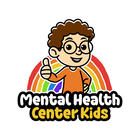|
Key Takeaways:
- The butterfly hug involves crossing your arms and tapping each hand on the opposite arm to create a rhythmic, calming effect.
- The butterfly hug is an effective relaxation technique, as it stimulates both sides of the brain, helps individuals self-soothe, and keeps them grounded.
- You can use the butterfly hug during stressful situations, when you’re overwhelmed, before a daunting task, or as part of a daily routine.
|
Stress, trauma, and anxiety can impact our mental and physical functioning. While stress is an unavoidable part of life and trauma can become overwhelming, there are simple ways to overcome it, including the butterfly hug technique. This quick and easy coping skill can work wonders for children and adults. Learn how it works, how to use it with children, how it benefits the body, and when to use it.
What is the Butterfly Hug?
Lucina Artigas developed the butterfly hug technique in the late 1990s. It aimed to help survivors of Hurricane Pauline process their trauma as part of Eye Movement Desensitization and Reprocessing (EMDR) therapy [*].
This self-soothing technique involves crossing one’s arms over the chest and gently tapping each hand on the opposite arm. The activity mimics the motion of a butterfly’s wings and is a form of bilateral stimulation [*].
Bilateral stimulation involves rhythmic movements that engage both hemispheres of the brain. This technique, activated by the butterfly hug, can help regulate the nervous system.
Butterfly Hug for Children
The butterfly hug technique is ideal for children, as it’s easy to adapt to different ages. For toddlers, parental involvement is critical. Therapists suggest crossing your arms around your child and gently tapping each side of their arms.
Older children can perform the butterfly hug themselves. You can suggest using this technique in conjunction with positive affirmations or calming statements, such as “I am safe” or “I feel relaxed.” You can also use guided imagery for kids to help them focus. For instance, you might ask them to imagine a calm, flowing stream or think of birds chirping in a beautiful spring field.
Butterfly Hug in EMDR Therapy
The butterfly hug was originally developed as part of Eye Movement Desensitization and Reprocessing (EMDR) therapy [*]. This technique utilizes bilateral stimulation to help the brain process challenging memories.
During EMDR, the butterfly hug can draw attention away from distressing memories or recollections. Therapists might utilize it before the session starts as a way to prepare the patient for processing traumatic memories or after the session to restore calm. The butterfly hug can also serve as a substitute for therapist-led eye movements and act as a method for maintaining focus on a target memory.
How and Why the Butterfly Hug Works
While the butterfly hug may seem simple, it has proven effects for children and adults.
Bilateral stimulation
Bilateral stimulation engages both sides of the brain through rhythmic sensory activity. The alternating taps in the butterfly hug activate both spheres of the brain, which integrate emotional and logical processing. Combining the butterfly hug with other therapeutic techniques can make intense feelings more manageable.
Self-soothing
Because the butterfly hug is rhythmic, it soothes the body and shifts it from fight-or-flight mode to a rest-and-digest state [*]. The tapping movements activate the parasympathetic nervous system, which brings you down from a state of overwhelm or arousal. They also slow a racing heartbeat and loosen tense muscles to help the body transition into a calmer state.
Grounding
When you’re feeling anxious, it’s normal for your thoughts to feel all over the place. The butterfly hug helps ground these thoughts by drawing your attention to a single task—the tapping. By focusing on the tapping, you can anchor your body and break the cycle of negative thoughts.
This grounding technique can be especially helpful when trauma triggers surface, as it helps anchor the body and steer you away from negative thoughts. It’s a safe way to remind your body that it’s not in danger.
How to Do the Butterfly Hug
You can do the butterfly hug anywhere—at home or even in public. Find a quiet space and follow these steps:
-
Cross your arms over your chest: Rest your left hand on your upper right arm and your right hand on your upper left arm. Spread your fingers wide like little wings.
-
Close your eyes and take a deep breath: You can perform this activity with your eyes open, but closing them can help limit distractions.
-
Begin tapping alternately: Tap your fingers against your shoulder or arm. Be gentle and follow a back-and-forth rhythm (left, right, left, right). Choose a comfortable speed, such as one tap per second.
-
Focus on the present moment and be mindful of your surroundings: Pay close attention to your breathing and the stillness of your surroundings. If it helps, quietly say affirmations out loud. For example, “I’m in my safe space” or “Nothing can hurt me.” Continue the process for about one to three minutes or until you feel calm.
When to Use the Butterfly Hug
The beauty of the butterfly hug is that you can perform it anywhere! This simple technique can be most useful under the following circumstances:
-
During moments of high stress or anxiety: If you feel yourself on the verge of a panic attack or are struggling to overcome anxiety, the butterfly hug can come in handy. The repeated tapping can slow down racing thoughts and help calm the body and mind.
-
When feeling overwhelmed: The butterfly hug can help ease feelings of overwhelm, especially when you’ve just received bad news, had an argument with someone, or are feeling intense.
-
As part of a daily self-care routine: Stress can build throughout the day, and the butterfly hug provides an excellent avenue for overcoming intense feelings. Find moments throughout the day, such as during work breaks or before completing tasks to use the butterfly hug.
-
Before or during challenging situations: It’s easy to feel wound up or tense when you’re about to encounter a challenging situation, such as confronting a loved one, delivering bad news, or giving a speech in front of a crowd. Use the butterfly hug to calm your thoughts and stabilize your emotions.
The Bottom Line
Sometimes, anxiety and trauma can feel like a never-ending battle. However, by building your arsenal of coping mechanisms, you can develop a system that works. Practicing simple exercises like the butterfly hug can make you feel calmer and more in control of your thoughts and actions.
Helping a child overcome trauma or anxiety? Use our coping skills worksheets to help them manage big emotions.
FAQs About the Butterfly Hug
Is the butterfly hug scientifically proven?
Yes, the butterfly hug is a scientifically proven method for reducing anxiety and promoting relaxation. From an EDMR framework, the butterfly hug has been documented to provide consistent calming effects.
How often should I do it?
There are no strict guidelines for how often you should perform the butterfly hug. It’s best that you use it as often as you feel comfortable. For example, you might use it as part of a daily ritual or during times of high stress.
What if it doesn’t work for me?
While the butterfly hug is an evidence-based technique, it might not be for everyone. Before you consider another coping skill, however, give it some practice. It might take some getting used to. Alternatively, you can add another calming element to the technique, such as humming, guided imagery, or repeating a mantra.
Sources:
- Luber M. “Eye Movement Desensitization and Reprocessing (EMDR) Scripted Protocols.” Springer Publishing Company, 2009.
- Artigas L & Jarero I. “The Butterfly Hug.” Implementing EMDR Early Mental Health Interventions for Man-Made and Natural Disasters: Models, Scripted Protocols, and Summary Sheets, 2013.
- Artigas L & Jarero I. “The EMDR Therapy Butterfly Hug Method for Self-Administer Bilateral Stimulation Technical Report.” ResearchGate, 2024.
- None Yulia Susanti, Candra, None Rina Anggraeni, Riani N, None Livana PH, Dawod A. “The Effect of Self-Healing Butterfly Hug on Anxiety Levels.” Journal Of Nursing Practice, 2025.





















































